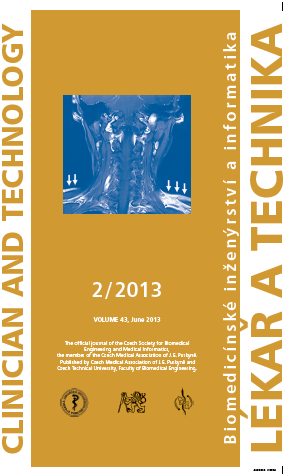WEARABLE ARTIFICIAL KIDNEY – EVOLUTION OF ITS CONCEPTS AND CURRENT STATE-OF-THE-ART
Keywords:
wearable artificial kidney, haemodialysis, peritoneal dialysis, sorption, bioartificial deviceAbstract
Shortly after intermittent haemodialysis became established treatment of chronic renal failure, the first wearable artificial kidney (WAK) device projected or even constructed to solve the problem of intermittent treatment unphysiology. Successful development of hollow fibres enabled construction of a sufficiently small dialyzer to be worn and recirculation of dialysate through a sorbent cartridge lead to tremendous drop in dialysate volumes needed. Tested were WAK devices based both on haemodialysis (HD) or on haemofiltration (HF) (after highly permeable membranes became available) as well as on peritoneal dialysis (PD). Later, some other techniques and processes appeared in armamentarium of WAK designers, such as charged membranes, electrodialysis, nanotechnological processes enabling to create membranes with solute-specific pores. Also a few hybride constructions appeared during the last decade using membranes coated with tubular epithelial cells to mimic tubular resorption of biological kidney. With current trends towards more frequent HD with higher material costs, WAK effort got another impetus, this time purely economical. The first commercially available WAK (although still waiting for a CE mark in Europe and FDA clearing in USA) was developed by a Singaporean company AWAK Technologies in 2011. A European WAK is being developed as a joint project in frame of FP7 and is expected to be ready by 2014. However, acceptance of WAK instead of conventional intermittent therapy both by physicians and by the patients themselves still remains unresolved.Downloads
Published
Issue
Section
License
Copyright (c) 2017 František Lopot

This work is licensed under a Creative Commons Attribution 4.0 International License.
Authors who publish with this journal agree to the following terms:
- Authors retain copyright and grant the journal right of the first publication with the work simultaneously licensed under a Creative Commons Attribution License (https://creativecommons.org/licenses/by/4.0/) that allows others to share the work with an acknowledgment of the work's authorship and initial publication in CTJ.
- Authors are able to enter into separate, additional contractual arrangements for the non-exclusive distribution of the journal’s published version of the work (e.g., post it to an institutional repository or publish it in a book), with an acknowledgment of its initial publication in this journal.
- Authors are permitted and encouraged to post their work online (e.g., in institutional repositories or on their website or ResearchGate) prior to and during the submission process, as it can lead to productive exchanges.
CTJ requires that all of the content of the manuscript has been created by its respective authors or that permission to use a copyrighted material has been obtained by the authors before submitting the manuscript to CTJ. CTJ requires that authors have not used any copyrighted material illegally, as for example a picture from another journal or book, a photo, etc. It is the author’s responsibility to use only materials not violating the copyright law. When in doubt, CTJ may ask the authors to supply the pertinent permission or agreement about the use of a copyrighted material.
The opinions expressed in CTJ articles are those of authors and do not necessarily reflect the views of the publishers or the Czech Society for Biomedical Engineering and Medical Informatics.


